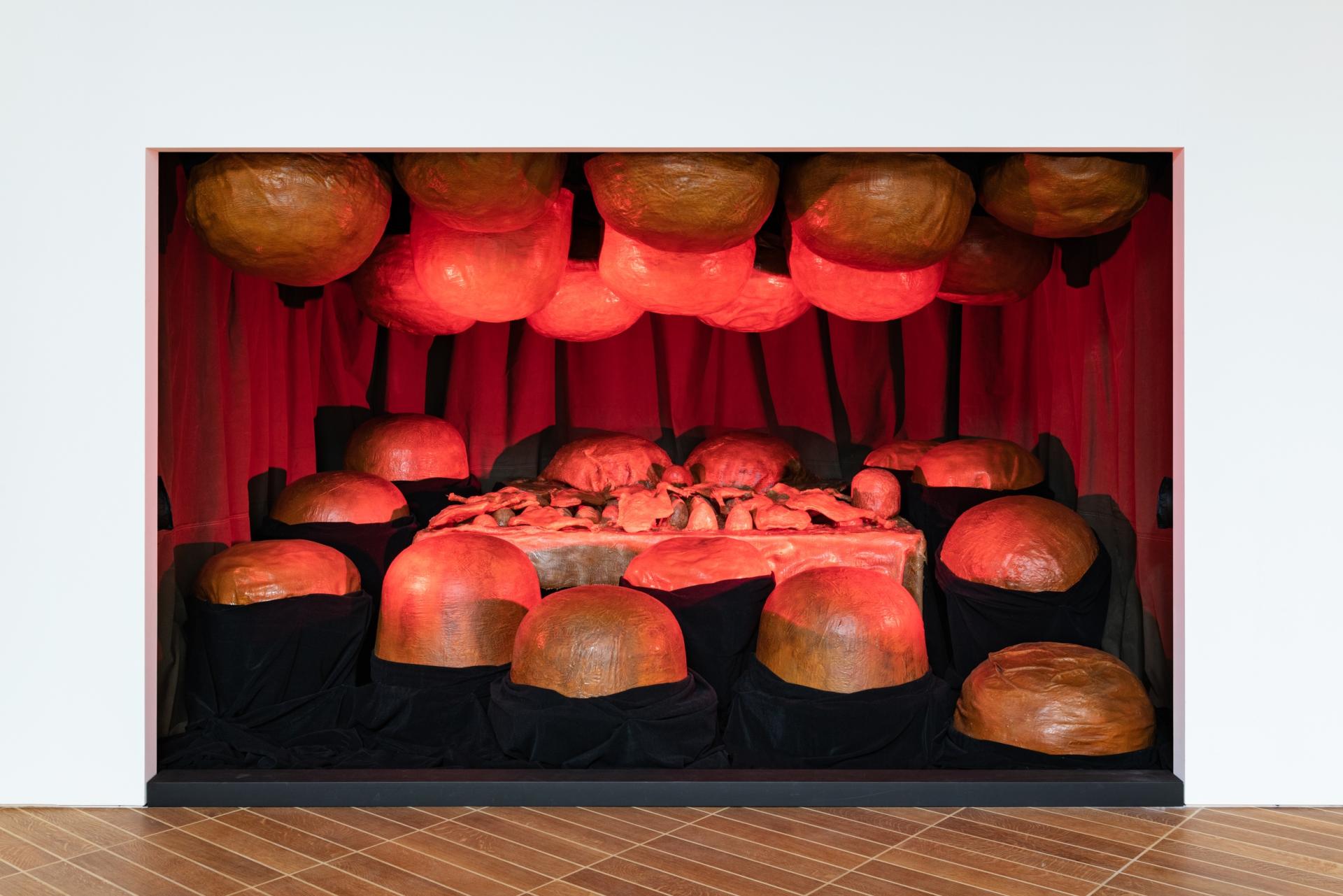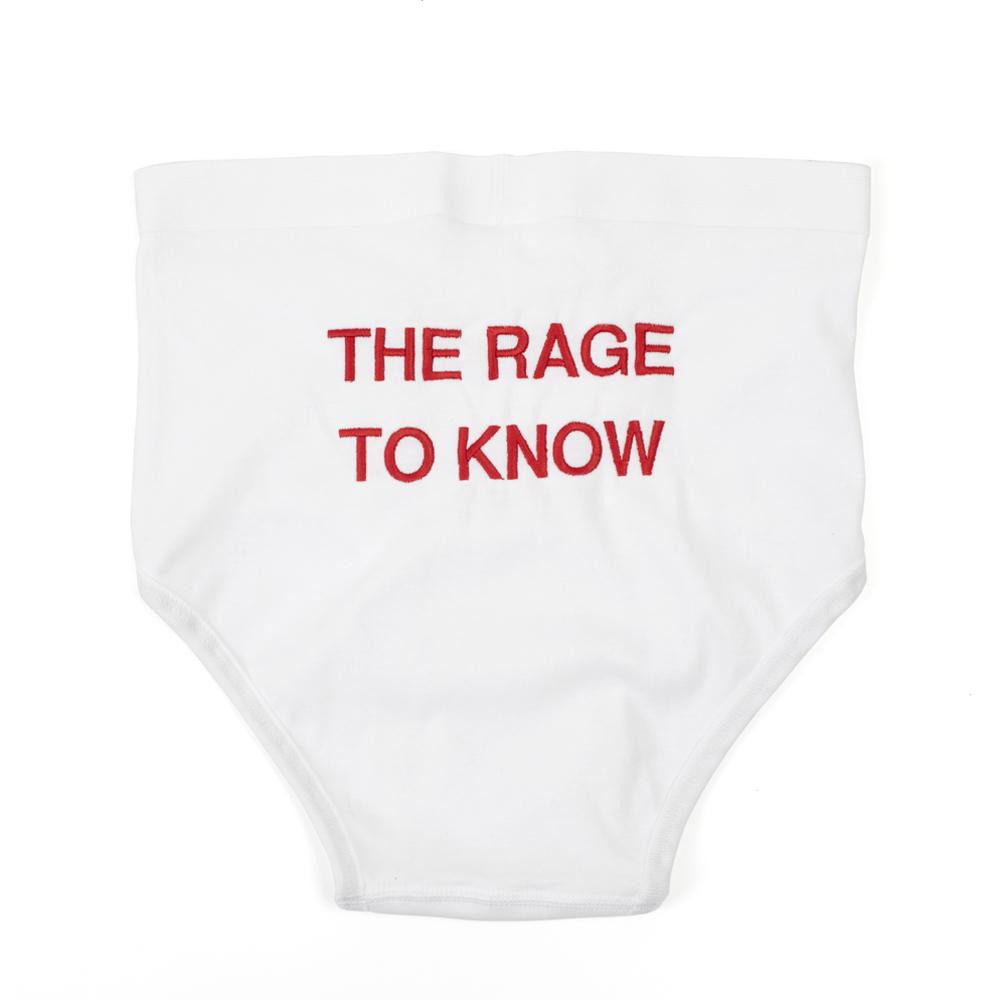Louise Bourgeois x Jenny Holzer
The Violence of Handwriting Across a Page
Jenny Holzer (b. 1950), one of the leading contemporary artists of her generation, has curated an exhibition of the work of Louise Bourgeois (1911–2010), widely regarded as one of the most important and influential artists of the twentieth and twenty-first centuries. Holzer is internationally renowned for her exploration and subversion of public language through the use of nontraditional forms, from street signs and T-shirts to projections and LEDs. Bourgeois’s psychologically charged work deals with the realm of human emotion: love, desire, dependency, sexuality, rejection, jealousy, and abandonment. Here, in an unprecedented encounter between two giants of American art, the Kunstmuseum Basel presents Bourgeois’s work as seen through Holzer’s eyes.
Holzer approaches Bourgeois’s art through the lens of her extensive writing: Bourgeois’s vast archive ranges from decades of diaries and letters to several hundred psychoanalytic writings, and she frequently incorporated the written word into her art. Works from all stages of Bourgeois’s oeuvre — sculptures, installations, paintings, drawings, prints, and texts — have been selected to create a series of thematic groupings in the galleries of the Neubau.
Curators: Jenny Holzer with Anita Haldemann

Credit: Louise Bourgeois descending the stairs in her home on West 20th Street in NYC in 1992. © The Easton Foundation, Photo: Claire Bourgeois
Louise Bourgeois
Louise Bourgeois (1911 Paris – 2010 New York) grew up near Paris, where her parents ran a business restoring tapestries. Her childhood was marked by a complicated relationship to her father, who cheated on Bourgeois' mother with the British nanny. This traumatic experience haunted her throughout her life and was the major source of inspiration for her art.
After pursuing studies in mathematics, Bourgeois attended a number of art schools in Paris. In 1938 she married the New York art historian Robert Goldwater (1907–1973) and moved to New York, where she raised three sons with him.
In the beginning, Bourgeois was focused on painting and printmaking. It was not until the late 1940s that she began to work as a sculptor. However, her almost obsessive writing, as well as drawing, always remained central forms of expression. After the death of her father in 1951, she became intensely involved in psychoanalysis.
Bourgeois varied the proportions and unusual materials of her work as much as its forms, which oscillated between abstraction and figuration. Strong emotions such as loneliness, jealousy, anger, and fear make up the common thread throughout her work.
The first major retrospective of Bourgeois' work was held at the Museum of Modern Art in New York when she was 70. Subsequently, she created her monumental spider sculptures and the famous and uncanny "Cells" – structures she enlivened with hanging fabric dolls and other objects. Art was her means of working through the past and practicing a kind of exorcism.

Jenny Holzer at the Kunstmuseum Basel | Neubau, 2022, Photo: Xandra M. Linsin
Jenny Holzer
Jenny Holzer (b. 1950 in Ohio, USA) lives in New York. She is widely regarded as one of the most important and influential artists of the 20th and 21st centuries. The conceptual and feminist multimedia artist is internationally known for her experimental and subversive handling of language in public space and her use of unconventional forms: from posters, street signs, and t-shirts to LED ticker signs and projections on building façades, landscapes, and moving vehicles.
In the 1970s, Holzer began hanging anonymous posters around the city in New York. She came to more widespread public attention in 1982 with her first LED text installations in Times Square. Her occasionally humorous but always jolting and provocative proclamations aim to combat ignorance and violence.
In 1989, Holzer became the first living female artist to represent the USA at the Venice Biennale, where she was awarded the Golden Lion. Her work has been exhibited in many major museums around the world, such as the Guggenheim Museums in New York and Bilbao, the Whitney Museum of American Art, and the Louvre Abu Dhabi.
LOUISE BOURGEOIS X JENNY HOLZER Projections
The combination of word and light plays an important role in Jenny Holzer's work: temporary light installations featuring monumental lettering projected onto buildings and landscapes have been among her best-known works since the 1990s.
The exhibition Louise Bourgeois x Jenny Holzer in Basel will be no exception: During the first days of the exhibition (February 16–22), Holzer will project excerpts from Bourgeois' writings on three public buildings in Basel: City Hall, the Old University on the Rheinsprung, and the Kunstmuseum Basel | Hauptbau.
Old University and City Hall: February 16–22, 7–10 p.m.
Kunstmuseum Basel | Hauptbau: February 16–22, 6.30–10 p.m.





